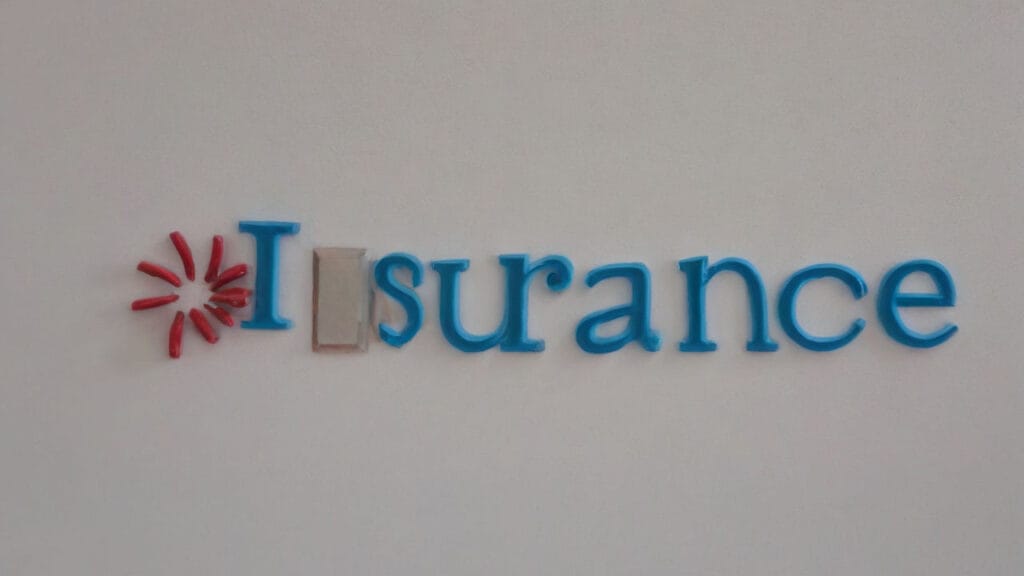Gap insurance, or Guaranteed Asset Protection insurance, is designed to bridge the financial gap between the amount you owe on your car loan and the actual cash value of your vehicle if it is totaled or stolen. Traditional auto insurance typically covers the current market value of the vehicle, which often falls short of the loan balance due to depreciation. Gap insurance ensures that you’re not left with a financial deficit in such scenarios.

The Importance of Understanding Gap Insurance
Understanding gap insurance is crucial for vehicle owners who want to safeguard their financial interests. Without this coverage, a total loss could lead to substantial out-of-pocket expenses if the insurance payout doesn’t cover the remaining loan balance. This understanding helps car buyers and lessees make informed decisions about protecting their investment and avoiding unexpected financial burdens.
How Gap Insurance Works
Mechanics of Gap Insurance Coverage
Gap insurance covers the difference between the amount you owe on your vehicle loan and the amount your primary auto insurance will pay out if your car is totaled. For example, if you owe $25,000 on your loan and your car’s market value is only $20,000, gap insurance will cover the $5,000 difference. This ensures that you’re not financially liable for a vehicle you no longer possess.
The Role of Depreciation in Gap Insurance
Depreciation significantly impacts the need for gap insurance. Vehicles depreciate rapidly, often losing a substantial portion of their value within the first few years. This depreciation creates a gap between the vehicle’s current value and the outstanding loan balance. Gap insurance addresses this disparity by covering the shortfall, making it an essential consideration for new car owners and those with high loan balances.

When is Gap Insurance Necessary?
Situations Where Gap Insurance is Crucial
Gap insurance is particularly crucial in several situations. It is highly recommended for individuals who have made a small down payment, financed a significant portion of their vehicle, or have a long loan term. Additionally, it is valuable for new car buyers, as new vehicles depreciate faster than used cars. Leasing vehicles also often necessitates gap insurance due to potential financial gaps at the end of the lease term.
New vs. Used Vehicles: Gap Insurance Needs
The need for gap insurance can vary between new and used vehicles. New cars depreciate more quickly, making gap insurance more pertinent. Conversely, used cars have already undergone significant depreciation, potentially reducing the need for gap coverage. However, if the loan balance remains high relative to the vehicle’s value, gap insurance may still be beneficial.
How to Determine if You Need Gap Insurance
Assessing Your Vehicle’s Depreciation
To determine if gap insurance is necessary, assess the rate of depreciation of your vehicle. New cars lose value rapidly, often experiencing a significant decline within the first few years. Calculate the difference between your vehicle’s purchase price and its projected value over time. If the depreciation outpaces the reduction in your loan balance, gap insurance may be a prudent choice.
Evaluating Your Loan Terms and Coverage
Evaluate your loan terms and current insurance coverage to determine the need for gap insurance. Consider factors such as the loan amount, interest rate, and term length. Longer loan terms and higher interest rates can exacerbate the financial gap. Review your existing auto insurance policy to understand its coverage limits and how they interact with gap insurance.

Types of Gap Insurance
Standard Gap Insurance Policies
Standard gap insurance policies cover the difference between the vehicle’s value and the remaining loan balance in the event of a total loss. These policies generally provide straightforward coverage, paying the shortfall between the insurance payout and the outstanding loan balance, minus any deductibles.
Lease Gap Insurance vs. Purchase Gap Insurance
Gap insurance comes in two primary forms: lease and purchase. Lease gap insurance is tailored for individuals leasing their vehicles, covering the difference between the lease payoff amount and the car’s value. Purchase gap insurance is intended for vehicle owners, covering the difference between the loan balance and the vehicle’s value. Understanding these distinctions helps ensure the coverage aligns with your specific situation.
Benefits of Gap Insurance
Financial Protection from Depreciation
The primary benefit of gap insurance is its ability to protect against financial losses due to vehicle depreciation. By covering the difference between the vehicle’s value and the remaining loan balance, gap insurance offers financial relief and prevents the owner from paying off a loan for a car that is no longer in use.
Peace of Mind with Comprehensive Coverage
Gap insurance provides peace of mind by offering comprehensive coverage that addresses potential financial gaps. Knowing that you are protected from the financial repercussions of vehicle depreciation alleviates stress and ensures that you are not left with an additional financial burden during a challenging time.
Limitations and Exclusions
Common Exclusions in Gap Insurance Policies
While gap insurance provides valuable protection, it comes with limitations and exclusions. Common exclusions include coverage for certain types of vehicles, such as classic or modified cars, and damages not covered by the primary insurance policy. Additionally, gap insurance may not cover overdue payments or late fees.
Understanding the Fine Print of Your Policy
It is essential to understand the fine print of your gap insurance policy to avoid surprises. Review the terms and conditions carefully to identify any exclusions or limitations that may affect your coverage. Pay attention to deductibles, coverage limits, and any specific conditions that apply to your policy.
Cost of Gap Insurance
Factors Affecting the Cost of Gap Insurance
The cost of gap insurance is influenced by several factors, including the vehicle’s value, loan amount, and coverage limits. New cars and higher loan balances typically result in higher premiums. Additionally, the insurance provider and policy terms can impact the cost. Understanding these factors helps in budgeting for gap insurance and finding a policy that offers the best value.
Comparing Costs: Insurance Providers and Policies
Comparing costs among different insurance providers and policies is essential for finding the most cost-effective gap insurance coverage. Evaluate premiums, coverage limits, and additional benefits offered by various providers. A thorough comparison helps identify the best policy that meets your needs while offering competitive pricing.
Purchasing Gap Insurance
Where to Buy Gap Insurance: Dealerships vs. Insurance Providers
Gap insurance can be purchased through various channels, including dealerships and insurance providers. Dealerships often offer gap insurance as an add-on during the vehicle purchase process, while insurance providers offer standalone policies. Consider factors such as cost, coverage, and convenience when choosing where to purchase gap insurance.
How to Choose the Right Gap Insurance Policy
Choosing the right gap insurance policy involves evaluating your specific needs and comparing available options. Consider factors such as coverage amount, exclusions, and cost. Review policy terms and conditions carefully to ensure that the policy provides adequate protection and aligns with your needs.
Filing a Claim with Gap Insurance
Steps to File a Gap Insurance Claim
Filing a gap insurance claim involves several steps. Start by notifying your primary auto insurance provider of the total loss. Obtain a claim form from your gap insurance provider and provide necessary documentation, including the primary insurance payout and loan balance details. Submit the completed form along with any required paperwork to initiate the claims process.
Common Pitfalls to Avoid When Filing a Claim
When filing a gap insurance claim, avoid common pitfalls such as incomplete or inaccurate documentation, delays in filing, and overlooking policy exclusions. Ensure that all required information is provided and that the claim is submitted promptly to avoid delays in processing. Understanding the claims process and adhering to guidelines helps facilitate a smooth and successful claim.
Alternatives to Gap Insurance
Exploring Other Coverage Options
While gap insurance offers valuable protection, there are alternative coverage options to consider. Extended warranties and comprehensive insurance policies can provide additional protection for vehicle repairs and damages. Evaluating these alternatives helps determine if they meet your needs and provide adequate coverage in conjunction with or instead of gap insurance.
Pros and Cons of Alternatives to Gap Insurance
Each alternative to gap insurance comes with its own set of pros and cons. Extended warranties offer coverage for vehicle repairs but may not address financial shortfalls due to depreciation. Comprehensive insurance covers a wide range of damages but may not fully bridge the financial gap in the event of a total loss. Weighing the advantages and disadvantages of each option helps in making an informed decision about the best coverage for your situation.
Case Studies and Real-World Examples
Examples of Gap Insurance in Action
Real-world examples illustrate the practical benefits of gap insurance. Consider a scenario where a vehicle is totaled shortly after purchase, and the owner is left with a significant loan balance due to rapid depreciation. Gap insurance covers the difference between the insurance payout and the loan balance, providing financial relief and preventing out-of-pocket expenses.
Lessons Learned from Real-Life Gap Insurance Claims
Lessons from real-life gap insurance claims highlight its effectiveness and importance. Successful claims demonstrate how gap insurance can alleviate financial burdens and offer peace of mind. Conversely, cases where claims were denied emphasize the need to understand policy terms and ensure adequate coverage.
BOTTOM LINE
Recap of Key Points on Gap Insurance
Gap insurance provides a crucial safety net by covering the financial gap between a vehicle’s value and the remaining loan balance in the event of a total loss. Understanding its mechanics, benefits, and limitations helps car owners make informed decisions about protecting their investment.
Final Thoughts: Is Gap Insurance Right for You?
Determining whether gap insurance is right for you involves assessing your financial situation, vehicle value, and loan terms. For those with new cars, high loan balances, or significant depreciation risks, gap insurance offers valuable protection. Consider your needs and options carefully to select the coverage that best meets your requirements and provides the necessary financial security.
Frequently Asked Questions (FAQs)
What is the aim of gap insurance?
The aim of gap insurance is to cover the financial shortfall between the amount owed on a vehicle loan or lease and the actual cash value (ACV) of the vehicle if it is totaled or stolen. This insurance helps protect against financial loss by paying the remaining balance that is not covered by standard auto insurance.
What is the concept of gaps in insurance?
The concept of gaps in insurance refers to the financial disparity that occurs when the amount owed on a loan or lease exceeds the vehicle’s market value. This gap is due to vehicle depreciation, which typically causes the vehicle’s value to decline faster than the loan balance decreases.
How do you calculate your gap?
To calculate your gap, subtract the actual cash value (ACV) of your vehicle from the outstanding balance on your loan or lease. For example, if your vehicle’s ACV is $15,000 and you owe $20,000 on your loan, the gap is $5,000.
How does gap insurance work?
Gap insurance works by covering the difference between the vehicle’s ACV (as determined by your standard auto insurance) and the remaining balance on your loan or lease. If the vehicle is totaled, gap insurance pays the remaining loan balance after your standard auto insurance payout.
What is the waiting period for gap cover?
The waiting period for gap cover varies depending on the insurance provider and policy. Some gap insurance policies may have a waiting period of 30 days before coverage takes effect, while others may provide immediate coverage. Always check your policy for specific details.
Does GEMS offer gap cover?
GEMS (Government Employees Medical Scheme) primarily provides health insurance and does not offer gap insurance for vehicles. For vehicle gap insurance, you would need to contact auto insurance providers or financial institutions.
What does the Sirago gap cover cover?
Sirago’s gap insurance covers the difference between the amount owed on a vehicle loan or lease and the actual cash value of the vehicle in the event of a total loss. It helps pay the remaining balance after your standard auto insurance payout. Source
Is gap insurance the same as standard auto insurance?
Gap insurance is different from standard auto insurance. While standard auto insurance covers the vehicle’s market value and damages, gap insurance specifically covers the financial gap between the vehicle’s value and the outstanding loan balance.
Can you transfer GAP insurance?
Gap insurance is generally non-transferable between vehicles or owners. If you sell or trade in your vehicle, you typically need to cancel the existing gap insurance and purchase a new policy for your new vehicle. Verify with your insurer for specific transfer or cancellation policies.
Is gap insurance only available in Canada?
No, gap insurance is not exclusive to Canada. It is available in many countries, including the United States and the United Kingdom, and can be purchased from various insurance providers globally. Source
Will GAP insurance cover negative equity?
Yes, gap insurance will cover negative equity. If the amount you owe on your loan is higher than the vehicle’s actual cash value, gap insurance will pay the difference, including any negative equity, in the event of a total loss.
What is gap in life insurance?
In life insurance, a “gap” refers to the shortfall between the total amount of coverage needed and the amount of coverage actually provided by a policy. This gap can leave beneficiaries with insufficient funds to meet financial needs after the policyholder’s death.
What does gap mean in Canada?
In Canada, the term “gap” in insurance typically refers to the difference between the vehicle’s market value and the outstanding loan balance. Gap insurance is designed to cover this financial shortfall in the event of a total loss.
What is a waiver of depreciation?
A waiver of depreciation is an insurance policy feature that allows for the replacement of a vehicle at its current value without accounting for depreciation. This means that in the event of a total loss, the insurer will pay for a new vehicle or the full replacement cost, rather than the depreciated value. Source









